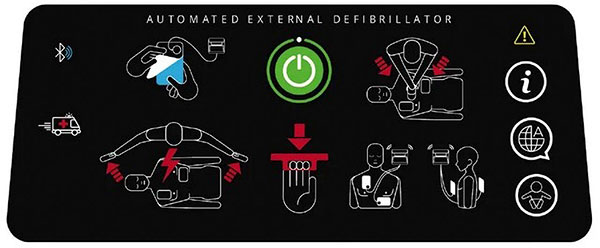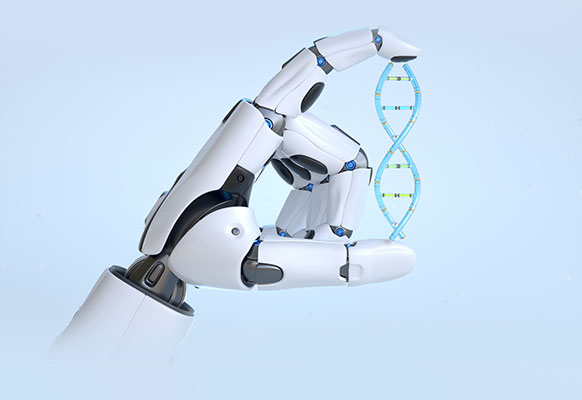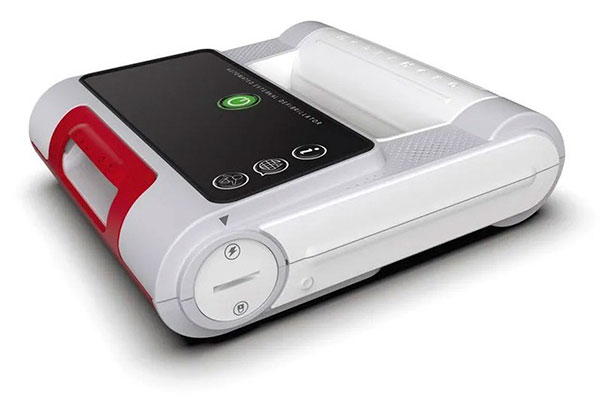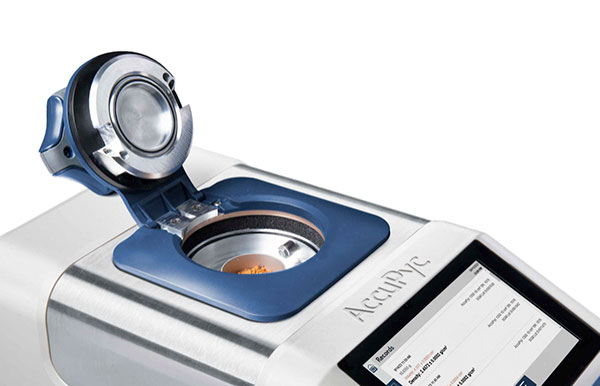
“In mission-critical industries such as medical and military devices, employing a highly integrated design methodology that researches and identifies the needs and limitations of the end-user(s) is crucial to developing the appropriate product that will succeed in the target markets.” —Philip Remedios, CEO and Director of Design and Development for BlackHägen Design
Latest News
March 19, 2024
Medical device design has benefited greatly from technology advancements. Such innovative technologies include rapid prototyping, and also artificial intelligence (AI), simulation, modeling, more sophisticated design software and better tools to facilitate iterative designs. Cumulatively, this has boosted the possibilities of medical device design and innovation.
We are at an unparalleled point in medical device design and innovation with the advancement of physics modeling and AI, according to Joe Sorovetz, senior vice president for healthcare and life sciences at Altair.
“Medical and wellness devices must be designed to withstand the structural and operational requirements associated with normal use, sterilization and misuse, all while balancing weight and cost considerations,” says Sorovetz. “Market demands for increased functionality, connectivity and miniaturization mean that all devices can benefit from the simulation of multiple physics, enabling optimizations for all structural, thermal, electrical, electromagnetic and manufacturing criteria.”
More specifically, Sorovetz says that many manufacturers are focused on customized devices to a specific patient, and they also seek ways to make devices more suitable and fitting to the patient’s experience.
“Flexibility and speed of design is achieved by the robustness of the tools,” he says. “Precision medicine and device development is a great example of bringing together real-time patient data and customization of design specific to individual patient needs. The tools we provide enable our customers to have technology solutions for simulation, design, AI and analytics, using [high-performance computing (HPC)] to expedite [development].”
Kamel McCray is a strategic account manager for MedTech in Hexagon’s Manufacturing Intelligence division, and is based in Cincinnati, OH. McCray says that advances in simulation and generative design tools are revolutionizing medical tech innovation.
“Our customers can test product designs virtually through endless scenarios reflecting real-world use long before physical prototypes are produced, and that way obtain insights faster to maximize safety [and] efficacy and deliver those devices to doctors and patients quicker,” says McCray. “This ensures no more flying blind on design decisions or costly late-stage failures. The reality faced by our clients and by the medtech market remains the same—‘how can I keep pace with innovation and obtain faster speed to market, while at the same time obtain approval without prohibitive cost and risk?’
“Using the best-in-class analysis technology can simulate the widest application range of injection molding processes to optimize product design and manufacturability, shorten time to market and maximize product [return on investment (ROI)]. Using 3D modeling delivers product insights, visualizes flow and thermal properties and optimizes processes before physical parts are built. Simulation also provides the ability to visualize the appearance in detail and detect potential defects from comprehensive analyses. Also, auto-meshing tools help to simplify the model preparation and allow the design team to validate designs efficiently.”
New medical devices now assist with the detection, diagnosis and treatment of more conditions and more patients than ever, says Brad Jolly, healthcare technical specialist with Keysight Technologies.
He adds that there is a trend toward high-speed electronics and compact design means that these devices can be used in numerous locations, including the home, remote settings, ambulances, and on and even inside the patient body (implantable defibrillators, capsule endoscopes). Of course, he adds, many new medical devices, including high-end imaging systems and surgical robots, are used within hospitals.
“All of this is enabled by highly advanced and integrated electronic design automation (EDA) tools that include simulation, modeling, advanced computation and multiphysics analysis,” says Jolly.
He explains that there are several reasons for the demand for EDA tools. First, he says, the problems that medical device engineers are addressing are challenging, and the amounts of data that medical devices must gather, process, analyze and transmit are increasing. Processing speeds are also increasing, which means there is less room for error.
“Digital processing and communication technologies are becoming more complicated, with quadrature amplitude modulation (QAM-1024, QAM-4096, etc.), double data rate memory (DDR4, DDR5), pulse amplitude modulation (PAM4, PAM8, PAM16), and numerous other complex digital modulation schemes becoming more common,” cites Jolly as another driver of this trend.
“Modern circuit boards may use many power rails at different voltages, often sub-1V,” he adds. “This makes clean power with limited ripple more difficult to design for, often optimizing between trade-offs. Highly sophisticated EDA tools are absolutely required when using these technologies, because the communication protocols themselves are complex and the consequences of seemingly minor signal integrity and power integrity issues become more critical. Every design flaw that can be wrung out during the design phase will improve the safety and efficacy of the medical device.

The cost and time associated with fabricating a physical prototype are often significant, according to Jolly, eliminating prototype build iterations can provide value to patients sooner, and cutting out unnecessary costs helps manufacturers keep devices affordable.
3D Modeling and 3D Printing
Philip Remedios is the CEO and director of design and development for BlackHägen Design. He notes that advances in 3D modeling as well as the advent of 3D printing have promoted efficiency in the design process for medical device design.
“Software-based R&D tools have developed steadily since the advent of 3D CAD modeling, simulation, and printing technologies, and are a given in 2024,” says Remedios. “The ability to rapidly prototype via 3D printing in production-quality materials has somewhat negated the value of [finite element analysis (FEA)] and other simulation software since actual prototype testing is far more accurate than even the best simulation setups. That said, simulating critical conditions such as thermal management and hydrodynamics early in the design process can take a lot of guesswork out of system architecture and streamline the path to functional prototypes.”
Remedios adds that recent digital tools that are accelerating and improving the R&D process are virtual and augmented reality (VR, AR) simulators.

“This technology enables virtual evaluation (with simplistic global outreach) of one or more CAD-level designs well before the details are created, allowing for preference ranking of entire architectures, features and touch points before a final design direction is committed to,” Remedios says.
Patient-Centric Design?
While proverbial manufacturing is often based on the production and output of like-kind products, produced in quantity, medical devices excel when they may be suited and fitted to a specific patient.
Historically, device manufacturers focused on technological capabilities, clinician experience and clinical outcomes, explains Steven Levine, senior director for life sciences and healthcare at Dassault Systèmes.
“As consumers gain increasing access to medical information, their expectations for treatment, recovery and long-term use have grown. Further, we now recognize the interdependencies between patient experience and positive clinical performance. Devices that are inconvenient, uncomfortable or intimidating tend to see poor compliance or improper use—severely hampering outcomes,” says Levine. “Thus, patient-centric design, which can take on many different forms, has become an imperative in the medical device industry, although often it remains a challenge to achieve.”
Levine adds that factors such as device ergonomics, wearability, ease of use, accessibility and emotional impact are increasingly part of the design target.
“Although individualizing the design of devices to an individual patient remains the exception, companies are finding that providing size options and customizability for individual anatomies improves device fitting and performance for the majority of patients,” Levine says. “Virtual human model libraries that span the breadth of human physiology are enabling companies to optimize these capabilities, allowing them to offer the minimum number of options that will cover the full population.
“Clinically, the availability of model-driven fitting tools is removing the guesswork from matching the right device to each patient,” Levine adds. “Importantly, devices are becoming smarter, so postimplantation, individual tuning of performance and even updating of capabilities to match patient needs are providing the custom patient experience.”
The medical device industry is in an interesting position, says Marc Horner, distinguished engineer at Ansys.
“On one hand, [computational modeling and simulation (CM&S)] tools have not been integrated into product design workflows to the level of aerospace, automotive and other industries in order to drive innovation,” Horner says. “On the other hand, the industry is able to take advantage of the significant advancements in CM&S tool development that have occurred over the past half century or so.”
Such advancements, according to Horner, cover everything from the increasing scope of simulation software to cover more physics, to progress in the speed of simulation through solver algorithm developments and graphics processing units (GPU), to the capacity to architect multi-tool.
Horner adds that it is important to recognize that the regulatory environment is also a critical consideration.
“This is because global regulatory frameworks for evaluating the safety and effectiveness of medical devices are built on three so-called ‘traditional’ sources of evidence, which are bench testing, animal testing and clinical trials,” Horner says.
The regulatory paths for developing, summarizing and reviewing this type of data is established. So, a well-established framework for instituting the regulatory acceptance of digital evidence needs to happen on a national and worldwide level.
Advancing Dramatically
In the end, engineering design tools and capabilities should greatly accelerate the end-to-end processes of medical device design.

Dassault’s Levine notes that the device division of the U.S. Food and Drug Administration, the Center for Devices and Radiological Health, has learned many lessons and has been extremely visionary and engaging closely with industry and academia to remain at the leading edge of this transformation.
“They have encouraged the development of digital evidence, which we now see contributing to the speed and success of innovations making it to patients,” says Levine. “This, combined with the previously described advent of digital continuity, allowing R&D teams to get access to real-world experience of their devices, we expect the entire time-to-market process to accelerate dramatically and safely over the coming decade.”
More Altair Coverage
More Hexagon Manufacturing Intelligence Coverage
More Keysight Technologies Coverage
Subscribe to our FREE magazine, FREE email newsletters or both!
Latest News
About the Author
Jim Romeo is a freelance writer based in Chesapeake, VA. Send e-mail about this article to [email protected].
Follow DERelated Topics






